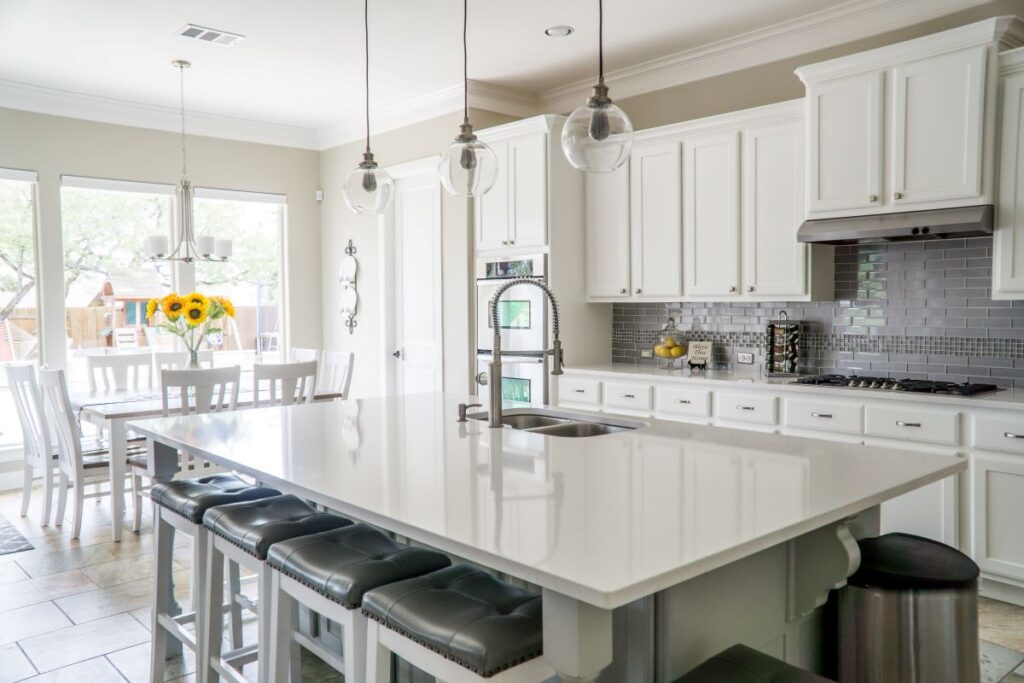Welcome to the future of home illumination, where lights do more than just brighten up rooms. In this article, we’ll embark on a journey to explore the fascinating world of smart home lighting systems. From energy-efficient bulbs to intuitive control systems, we’ll delve into the various components, benefits, and real-world applications that make these systems an integral part of modern living.

Shedding Light on Smart Home Lighting Systems
Smart lighting systems have evolved significantly in recent years, offering homeowners a seamless blend of functionality and aesthetics. Whether you’re a tech enthusiast or someone looking to enhance the ambiance of your living space, smart lighting has something for everyone.
The Basics of Smart Lighting
Smart lighting systems consist of interconnected devices that allow you to control and automate the lighting in your home. These systems typically include smart bulbs, smart switches, and a central hub that facilitates communication between devices. The key feature of smart lighting is its ability to be controlled remotely via a smartphone app or voice commands.
Benefits of Smart Lighting
- Energy Efficiency: One of the primary advantages of smart lighting is its energy efficiency. Smart bulbs often use LED technology, which consumes less power than traditional incandescent bulbs. Additionally, the ability to schedule lighting and adjust brightness levels contributes to reduced energy consumption.
- Customization and Personalization: Imagine being able to adjust the color and intensity of your lights to match your mood or the time of day. With smart lighting, you can create customized scenes that cater to different activities, whether it’s a cozy movie night or a lively dinner party.
- Remote Control: Forgot to turn off the lights when you left for work? No problem! Smart lighting allows you to control your lights remotely using a smartphone app. You can also set schedules to simulate your presence at home, enhancing security.
- Integration with Smart Home Ecosystems: Smart lighting seamlessly integrates with other smart home devices. You can create automation routines, such as having the lights turn off automatically when you leave the house or syncing them with your smart thermostat for a holistic home automation experience.
Exploring Top Smart Home Lighting Brands
Now that we’ve covered the basics, let’s take a closer look at some of the top players in the smart lighting industry.

Renowned for its extensive range of smart lighting products, Philips Hue has established itself as a leader in the market. From smart bulbs to light strips and smart switches, Philips Hue offers a comprehensive ecosystem that’s compatible with popular voice assistants like Amazon Alexa and Google Assistant.

LIFX stands out for its Wi-Fi-enabled smart bulbs that don’t require a separate hub. With a wide spectrum of colors and impressive brightness levels, LIFX bulbs are a favorite among those seeking vibrant and dynamic lighting options. The brand also integrates seamlessly with popular smart home platforms.

For those who want to make a statement with their lighting, Nanoleaf’s modular light panels are a unique and artistic choice. These triangular panels can be arranged in various patterns and are capable of displaying millions of colors. Nanoleaf’s products are compatible with major smart home ecosystems, allowing for easy integration.

Yeelight, a subsidiary of Xiaomi, offers an affordable yet feature-rich range of smart lighting solutions. Their smart bulbs boast impressive color accuracy, and the Yeelight app provides intuitive control over brightness and color settings. Yeelight products are also compatible with major voice assistants.

Sengled focuses on simplicity and affordability with its smart lighting products. The brand offers a variety of smart bulbs, including options with built-in speakers and security cameras. Sengled’s user-friendly approach makes it an excellent choice for those new to smart home technology.
Tips for Optimizing Your Smart Lighting Setup
Now that you’re familiar with the benefits and top brands, let’s explore some tips to ensure you make the most of your smart lighting system.
Plan Your Lighting Scenes:
Before diving into the world of smart lighting, take some time to plan how you want to use it in different areas of your home. Consider creating scenes for relaxation, productivity, and entertainment. This thoughtful approach will enhance your overall experience.
Experiment with Colors:
Don’t shy away from experimenting with different colors to set the mood in each room. For example, warmer tones in the bedroom can promote relaxation, while cooler tones in the workspace can enhance focus and productivity.
Incorporate Automation:
Take advantage of automation features to simplify your daily routine. Set up schedules for lights to turn on and off automatically, or integrate motion sensors to illuminate your path when you enter a room. Automation not only adds convenience but also contributes to energy savings.
Integrate Voice Control:
Voice control adds an extra layer of convenience to your smart lighting setup. Connect your system to popular voice assistants like Alexa or Google Assistant, allowing you to control your lights with simple voice commands. It’s a game-changer for hands-free control.
Keep Software and Firmware Updated:
To ensure optimal performance and security, regularly update the software and firmware of your smart lighting devices. Manufacturers often release updates to enhance features, fix bugs, and address potential vulnerabilities.
The Future of Smart Home Lighting
Advancements in LED Technology
As LED technology continues to evolve, smart home lighting systems are set to become even more efficient and versatile. Expect improvements in color accuracy, brightness levels, and overall performance, providing users with an enhanced lighting experience.
Integration with Smart Cities
Looking ahead, smart home lighting will likely become an integral part of larger smart city initiatives. Imagine a city where streetlights adjust based on real-time data, optimizing energy usage and enhancing safety. The potential for interconnected smart lighting extends far beyond individual homes.
Conclusion
As we wrap up this journey into the world of smart home lighting systems, I hope you’re as excited as I am about the endless possibilities these technologies bring to our daily lives. From enhancing ambiance to improving energy efficiency, smart lighting is a brilliant addition to any home.
Remember, the key to a successful smart lighting setup lies in understanding your needs, exploring the available options, and embracing the creativity that comes with customization. So, go ahead, illuminate your home with the power of smart lighting, and experience a brighter, more connected future.

SAMMY MWANGI the editor of Autohomegadgets.com. He is an Electronics Technician enthusiast and a Sales Manager in one of the leading ICT companies in Africa. When he is not working, he loves to travel and explore nature. He is a Robot fanatic too.
